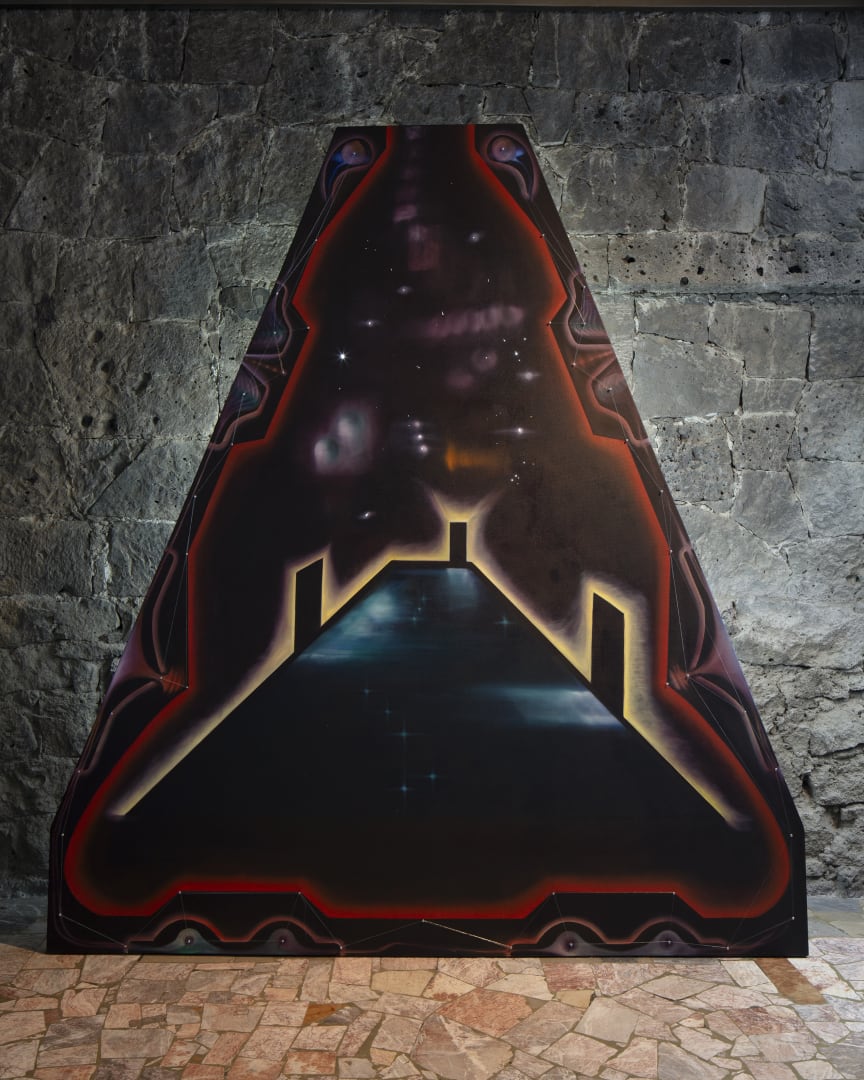PEANA is pleased to announce ¿Cómo se escribe muerte al sur?, a duo exhibition by Carolina Fusilier (Buenos Aires, 1985) and Paloma Contreras Lomas (Mexico City, 1991).
The work responds to the phantasmagoric imagination of the museum, which Diego Rivera created as a temple for art to house his collection of prehispanic objects and where he hoped to be buried when he died. Through video and sound installation, sculpture, and painting, the artists will transform the museum into the site of a fictional thriller mixing personal views on death with the symbols embedded in this enigmatic museum/monument/mausoleum.

